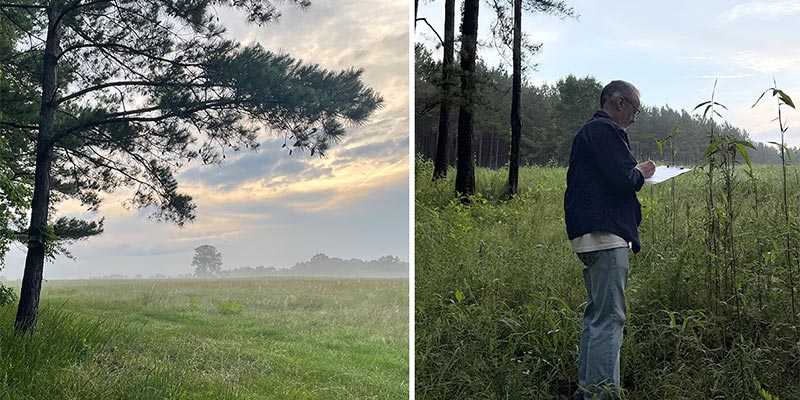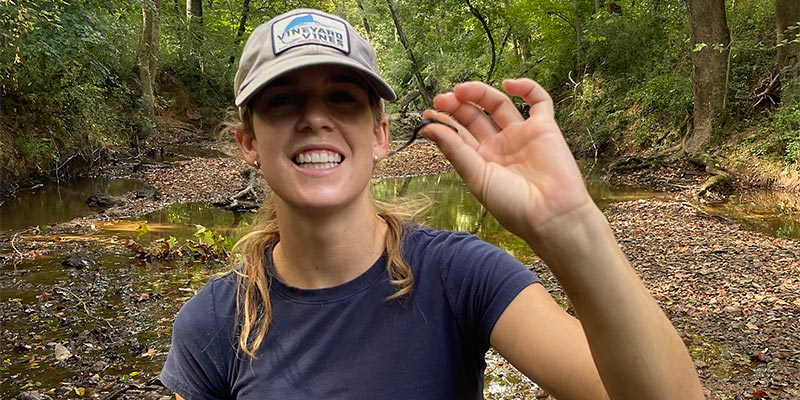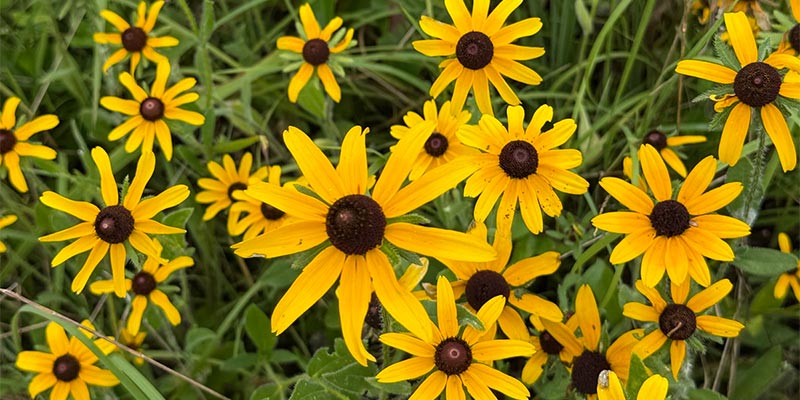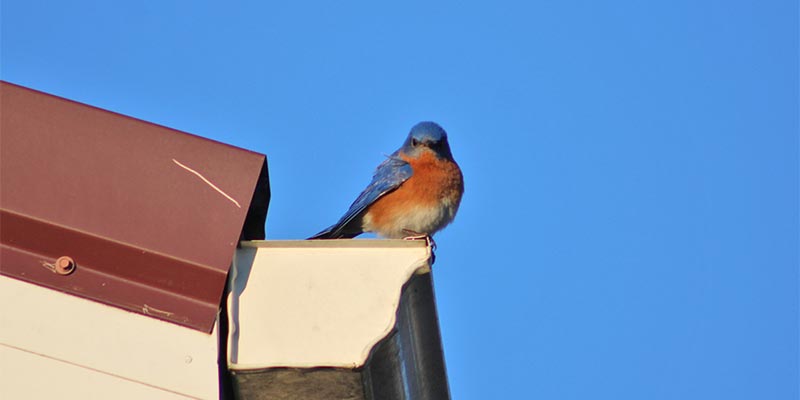May

Monthly Weather Review
Monthly Rainfall Total – 6.93 in
Highest Temperature - 93°F
Lowest Temperature - 48°F
Average Wind Speed – 6.1 mph
Thursday May 1st
- While checking Bluebird boxes, CWF staff were startled to find a Black Rat Snake (Pantherophis obsoletus) coiled up inside one of the bird boxes.
- The snake was most likely digesting a recent meal of Bluebird eggs.
- This shows the importance of predator guards (a metal cone on the pole below the box) – time to add one for this box.
- Fortunately, it is still early enough in the season and the Bluebirds will likely have another brood in this box.
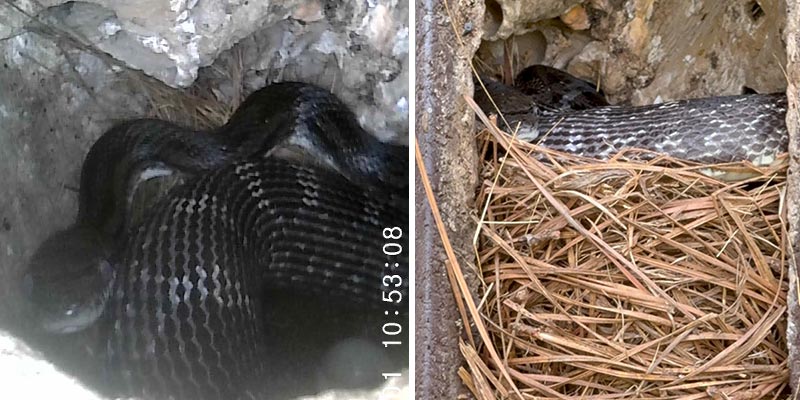
Black Rat Snake seen through endoscope and the culprit revealed.
- Field assistant Smiley enjoyed resting in the cool grass while staff continued their bird box monitoring. She always joins us on adventures, but this time of year with so many newborn fawns we have to keep her from running off.

Field assistant Smiley.
Thursday May 8th
- CWF staff observed a Carolina Chickadee (Poecile carolinensis) hatchling, gathering the courage to fledge the nest for the first time. For these birds it’s the beginning of their young adult life. For us humans, that’s how it feels when we send our kids off to college!
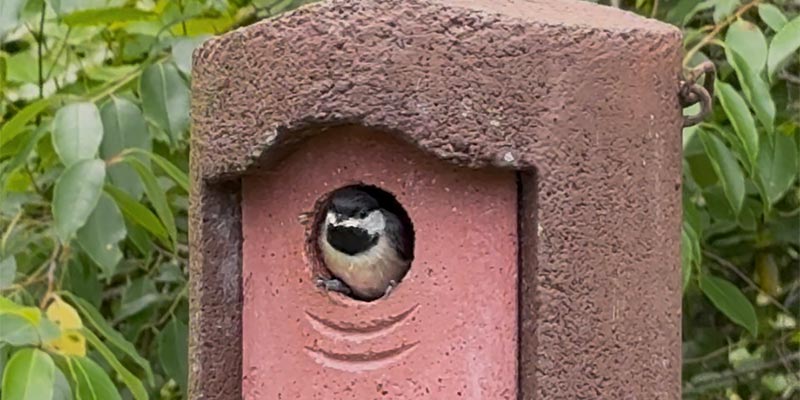
- A Pond Slider Turtle (Trachemys scripta) was spotted in the middle of a trail, seemingly making its way towards Fireworks Pond. This time of year, it was likely a female laying her eggs in leaf litter nearby.
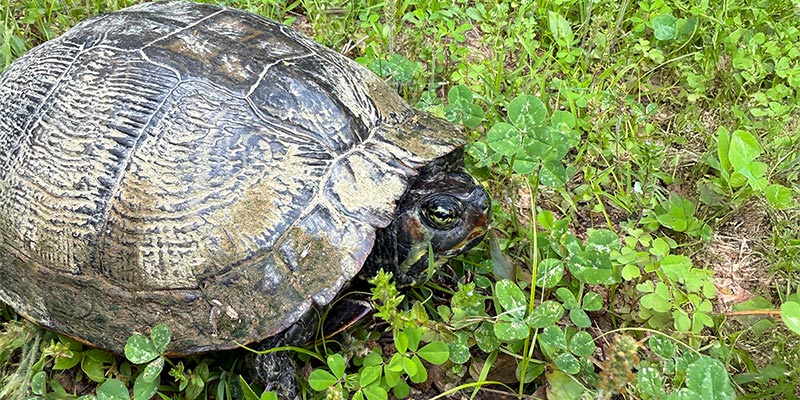
Friday May 9th
- While checking on the Brown-headed Nuthatch (Sitta pusilla) hatchlings, CWF staff were surprised to find another Black Rat Snake (Pantherophis obsoletus) in the box instead. The snake was safely removed.
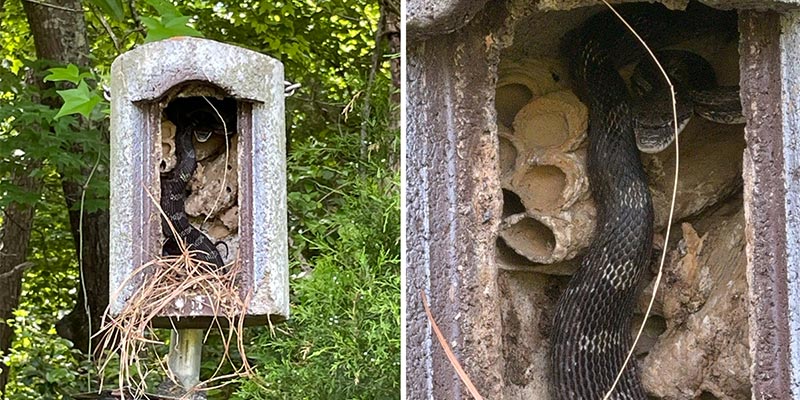
- Dr. Davis Carter from Queens University visited with his student, Cal, to set up a malaise trap— kind of like a camping tent, except instead of keeping flying insects OUT, this one is designed to keep them IN, and capture them for to document the biodiversity of invertebrates at Southern 8ths.
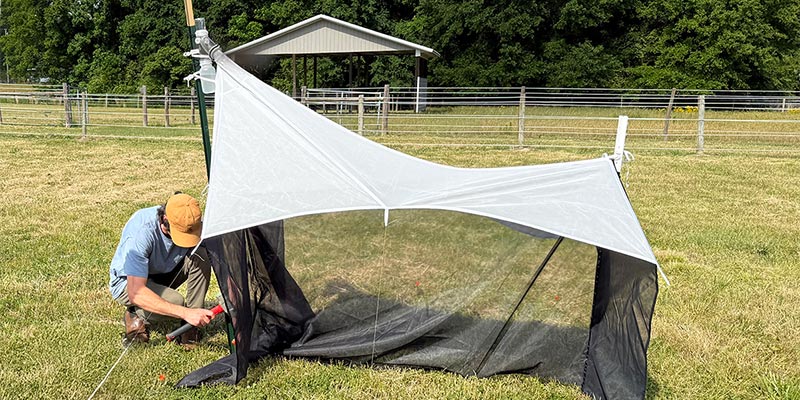
Monday May 12th
- The CWF Water Quality team headed to Thompson Creek to collect water samples and test for Fecal Coliform bacteria to help determine how much runoff there had been from upstream farm fields in the previous rainstorm. Around these parts…in the Broiler Belt of the Carolinas…that bacteria generally means one thing – there’s wayyyy too much chicken poop is being spread on the land.
- A small Eastern Box Turtle (Terrapene carolina carolina) was spotted enjoying the rain. Wherever we go at Southern 8ths, we see these guys – the only upland/terrestrial turtle in the Carolina Piedmont.
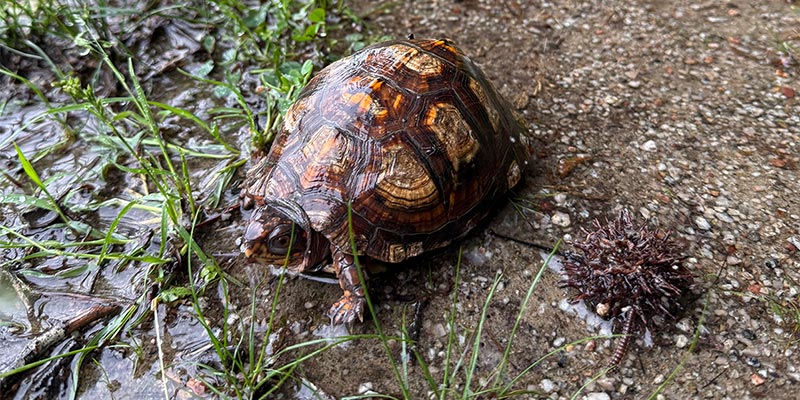
Wednesday May 14th
- While checking beetle traps, the CWF team spotted a snail, uncertain of what species, latched onto one of the panel traps. Escargot anyone?
Thursday May 15th
- A Carolina Pine Sawyer (Monochamus carolinensis) was seen attempting to enter a panel trap. Not a good sign…these guys are often present in dead or diseased pine trees, and they help spread pine wilt disease. A forester’s rule of thumb: sometimes you have to thin and remove the unhealthy trees to keep the healthy ones healthy.
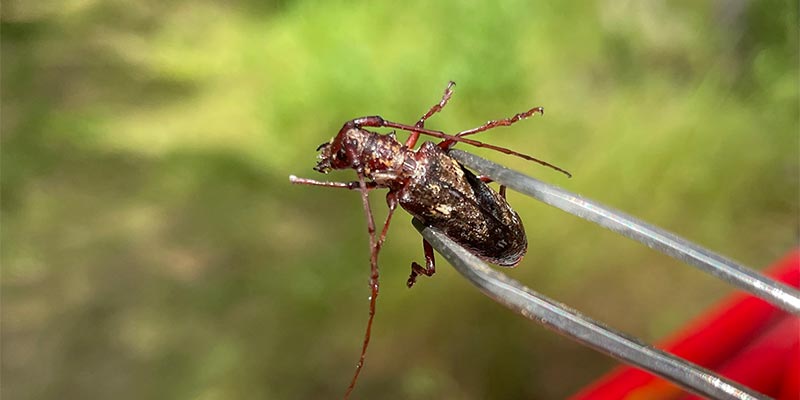
Tuesday May 20th
- A Common Snapping Turtle (Chelydra serpentina) was observed digging an egg chamber, though no eggs were laid. They come up from the muddy depths of the ponds -- the closest thing we have to “the Creature from the Black Lagoon”.
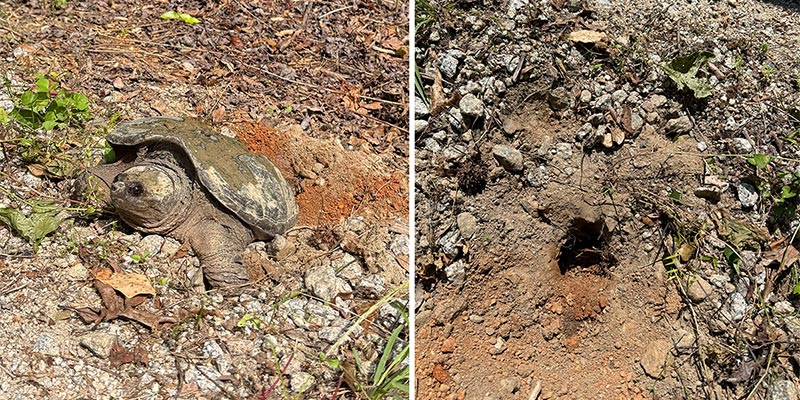
Wednesday May 21st
- CWF staff got creative while inspecting a Barn Owl box. Using a broomstick for support, we mounted an endoscope to peek inside the high box. Who knew a broom could double as a bird-monitoring tool? We’ve still got good old American ingenuity!
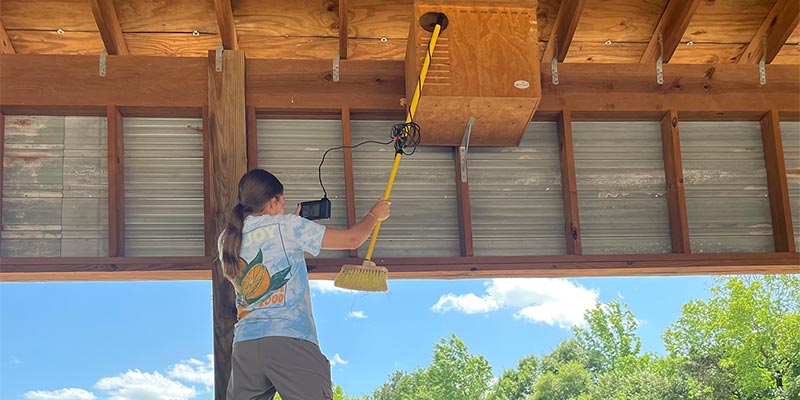
Friday May 23rd
- A Carolina Wren (Thryothorus ludovicianus) nest containing four eggs was found in a pine tree near one of the artificial boxesFor those of you used to finding Carolina Wrens nesting in your mailboxes, flower pots, and empty shopping bags – this is their native habitat.
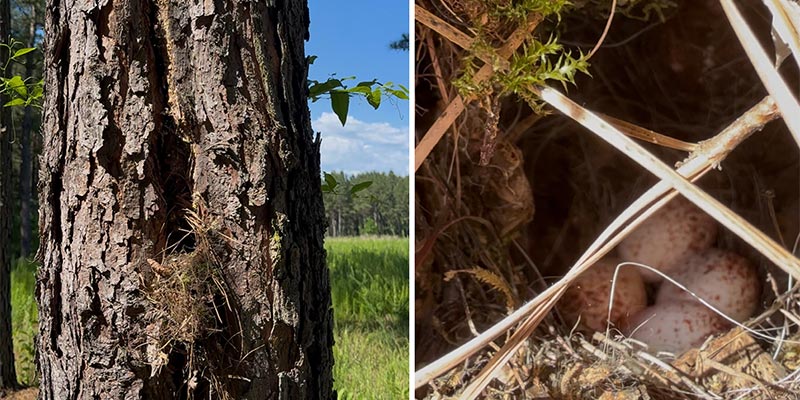
Wednesday May 28th
- While passing by the chicken coop, the CWF team spotted another Black Rat Snake (Pantherophis obsoletus) trying to enter the coop. The team quickly responded and relocated the snake far away from the chickens. The snake was pretty relaxed – almost like he expected to be moved. Now we know why they’re locally known as “chicken snakes”?
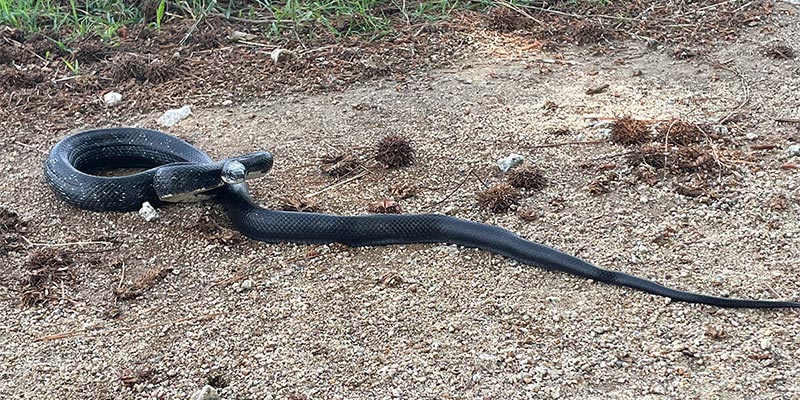
- Later that day, a large Common Snapping Turtle (Chelydra serpentina) was seen resting in the grass along the main dirt road.
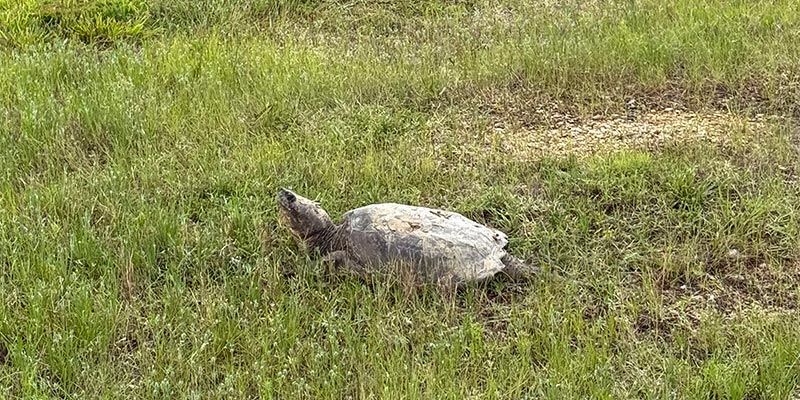
Thursday May 29th
- During the Breeding Bird survey, the CWF team paused to enjoy a mystical sunrise. As the old saying goes, “the early bird catches the worm” – and that includes sunrises.
- The survey was led by Professor Travis Knowles from Francis Marion University. What an incredible birding-by-ear expert. No Merlin app needed.
